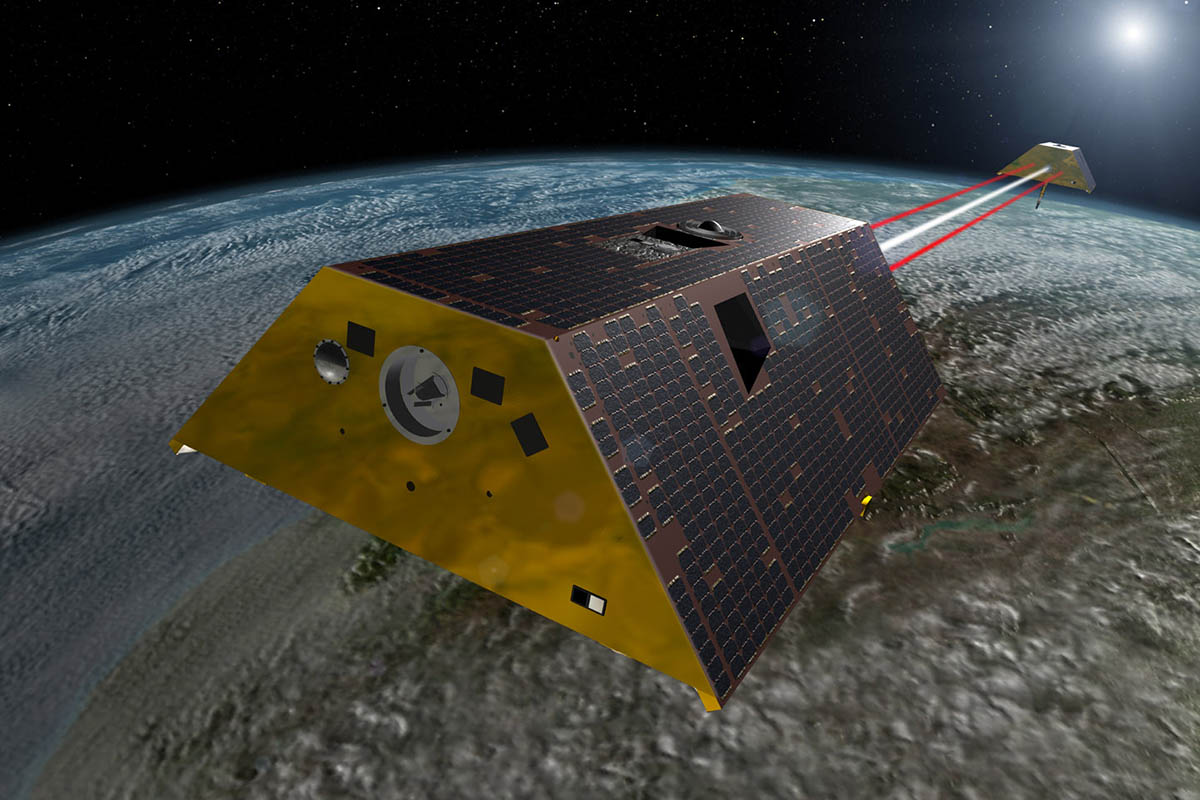This artist’s rendering shows the twin spacecraft of the Gravity Recovery and Climate Experiment Follow-On (GRACE-FO) mission, which will continue the original GRACE mission’s legacy of tracking fluctuations in Earth’s gravity field to detect changes in mass, including in ice sheets and aquifers. (NASA/JPL-Caltech)
Home This artist’s rendering shows the twin spacecraft of the Gravity Recovery and Climate Experiment Follow-On (GRACE-FO) mission, which will continue the original GRACE mission’s legacy of tracking fluctuations in Earth’s gravity field to detect changes in mass, including in ice sheets and aquifers. (NASA/JPL-Caltech) This artist's rendering shows the twin spacecraft of the Gravity Recovery and Climate Experiment Follow-On (GRACE-FO) mission, which will continue the original GRACE mission's legacy of tracking fluctuations in Earth's gravity field to detect changes in mass, including in ice sheets and aquifers. (NASA/JPL-Caltech)
This artist’s rendering shows the twin spacecraft of the Gravity Recovery and Climate Experiment Follow-On (GRACE-FO) mission, which will continue the original GRACE mission’s legacy of tracking fluctuations in Earth’s gravity field to detect changes in mass, including in ice sheets and aquifers. (NASA/JPL-Caltech)



